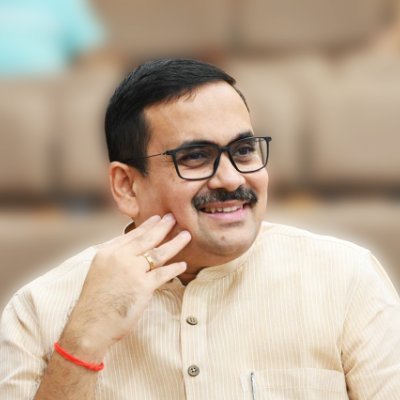The Union Budget 2020-21, has come across as a peoples’ budget. Its mantra for enhancing “Ease of Living”, its focus on empowering the farmer through the agricultural credit card initiative which has a target of 15 lakh crore for 2020-21, schemes such as “Kisan Rail” and “Krishi Udaan” to create a contiguous cold supply chain for perishable produces are a few example that immediately strike anyone who examines this financial and economic roadmap.
The resolve to expand the number of empanelled hospitals to 20,000 under the PM Jan Arogya Yojana for the poor and the expansion of the Jan Aushadhi Kendra scheme to all districts of the country and the offering of 2000 medicines and 300 surgicals demonstrates the Modi government’s resolve to focus on imparting affordable, reachable and quality healthcare to the poor. This a promise that PM Modi had made while launching the historic health care programme.
The Budget aims to achieve and enhance “Digital Governance”, and, in the words of the Union Finance Minister, aims “to improve physical quality of life through” the “National Infrastructure Pipeline”, “risk mitigation through Disaster Resilience”, ‘social security through Pension and Insurance penetration.” The Budget is very uniquely layered and themed, it caters to “aspirational India”, to “Economic development for all” and aims to enhance the and further dynamise the evolution of a “Caring Society” in which the philosophy of Antyoday, is an “article of faith.”
One unique feature of this Budget has been its reiteration of India’s civilizational achievements and its front ranking status in trade and commerce in the past. That India was also a mercantile power besides being a cultural and spiritual powerhouse has been reiterated, for the first time, in a Union Budget. The proposal to “establish an Indian Institute of Heritage and Conservation” and the pledge to develop five epochal archaeological sites as “iconic sites with on-site Museums” has been symbolic of this reiteration. These selected sites from across India have defined, shaped, perpetuated, preserved Bharat’s civilizational evolution, struggle, march, spread, and permanency, hence her significance and symbolism. The pledge to set up a Tribal Museum in Jharkhand is a much needed initiative to recognise the rich and unique contribution of this great section to our national march and journey.
The protests against the Citizenship Amendment Act (CAA) has been continuing by a certain section in the country. These protests are essentially against the Constitution of India and are driven by a mind-set which wants to overthrow India’s robust parliamentary democracy. What is disconcerting is that some political parties and their leaders have been egging on street violence and have been indulging in fear-mongering. These leaders are primarily from supposedly mainstream and responsible parties like the Congress and the CPIM.
Former National Advisory Council (NAC) member, of which Congress “interim” president Sonia Gandhi was the chairperson during the UPA regime, Mr Harsh Mander, known as her close confidante and policy advisor, has been repeatedly calling for settling the CAA issue, the article 370 abrogation issue on the streets. He has called for rejecting the Supreme Court of India, for rejecting the Parliament and has incessantly demanded from the protestors that they settle the matter on the streets, in short, Mr Harsh Mander has called for violence and mobocracy to take over the spirit of democratic protest, dialogue and debate.
The CPIM leaders too, have not been far behind. Over the last three months or so, they have been at the forefront, spreading misinformation and false information on CAA, thereby generating a wave of false consternation and panic among a certain section of the people and a particular community. Their politics thrives on victimhood and in perpetuating a false sense of persecution. Their provocations have spread violence, their instigation have created a sense of uncertainty in the lives of many. It is also ludicrous to say the least that a former Prime Minister like Dr Manmohan Singh has issues with chants of “Bharat Mata Ki Jai”, by casting aspersions and ridiculing these expressions, Dr Singh is, in fact, displaying his disconnect with the spiritual essence of India.
Similarly, a certain section of the intelligentsia in India and Indian intellectuals abroad have persisted in spreading misinformation on CAA, they have been, deliberately articulating false interpretations of the Act. These elements are viciously untruthful when they say that the CAA is going to make large number of Muslims stateless. They know this to be untrue, but they persist with this with the hope and the aim that these utterances will generate ill-will internationally against India. The communist conglomerate and their international intellectual networks have always worked to undermine India’s national interest and image internationally.
The Congress is now an active participant in that nefarious game. Along with all of this comes the preposterous claim made by an elected chief minister of an India state – West Bengal – that the Corona Virus issue is a ploy of the Modi government to divert attention from the “Delhi riots.” Such fantastic contentions only exposes the actual state of mind of the anti-Modi brigade, a state of mind which is uncontrolled, suffering bouts of delusions, incoherent, mis-guided, devoid of agenda, plagued by lack of direction. Among those who fan the fires of false protest against the CAA, is an increasing realisation of their own irrelevance and marginalisation, hence they clamour and clamber to try and retard the emergence of a “New India.”
(The views expressed are the author's own and do not necessarily reflect the position of the organisation)

